 |
| April 03, 2012 | Volume 08 Issue 13 |
Designfax weekly eMagazine
Archives
Partners
Manufacturing Center
Product Spotlight
Modern Applications News
Metalworking Ideas For
Today's Job Shops
Tooling and Production
Strategies for large
metalworking plants
Wheels:
Running Formula One
means running by the numbers
Lotus F1 Team designers rely on Elysium CADdoctor for data transfer, software interoperability, reverse engineering, and, of course, speed.
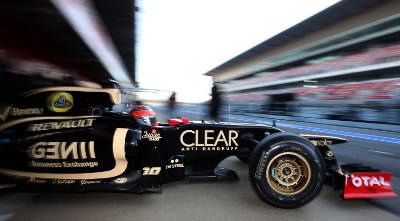
Figure 1: The 2012 Lotus F1 team car in action.
By Chris Hardee
More than 500 million worldwide watched televised Formula One broadcasts last season. But unless you actually sit inside a car or inside the sport it's unlikely that you'd know that at speeds of up to 220 miles an hour on the straightaway and G forces that can top five in the most extreme corners, Formula One racing pushes car and driver to the edge of what's mechanically and humanly possible.
A cross between driving and flying, F1 with its maze-like circuits requires constant acceleration, braking, and cornering that put tremendous stresses on the vehicle and demands on the car's "pilot." Drivers are literally form-fitted to their seats and wear the car like a second skin. Reflexes need to be instinctual. Vehicles must be precision-tuned. Speed is king. And as a result, there is no room for error with even the smallest detail.
At a minimum weight of 640 kg (1,411 lb, which is less than one-third the average passenger car in the U.S.), today's F1 racing machine including nose, cockpit, wings, and diffuser embodies the almost perfect aerodynamic balance of maximum downforce (to keep the car in contact with the road) and minimum drag (to make sure it goes fast). In fact, design teams have become so effective at their aero analyses that the Fιdιration Internationale de l'Automobile, or FIA the group that regulates the sport is forced to pass new rules almost every year to keep the cars from going faster than is realistically safe.
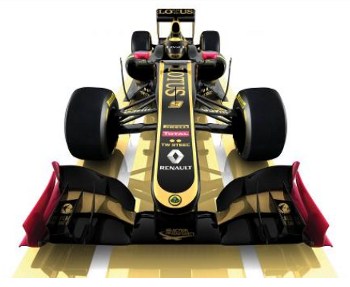
Figure 2: A CAD rendering of the Lotus F1 E20.
To push the safe-speed envelope, Lotus employs more than 500 people at its UK-based Enstone facility northwest of London. Of that total, 60 to 70 designers work year-round on the design, testing, and manufacture of the vehicle's 20,000 or so interdependent parts. "We're a pretty sizeable facility for turning out just a couple of race cars," says Ian Goddard, senior engineer in charge of computer-aided engineering (CAE).
For Goddard, the yearly design cycle involves balancing resources between tweaking the current model in the midst of the racing season and major design revisions that will be part of the new car for the next season. His goal: to support the design team in maintaining on-track performance while keeping more long-term developments also on track. This can be a difficult, even stressful, balancing act.
"We condense the bulk of new design into the last quarter of the year which, for the 2012 E20 model just launched in February, included more than 11,000 drawings," says Goddard (see Figures 2 and 3). "In the last week of build, we had parts turning up minute by minute, hour by hour, with day and night shifts fabricating the car and feeding all the technical information back to the design office."
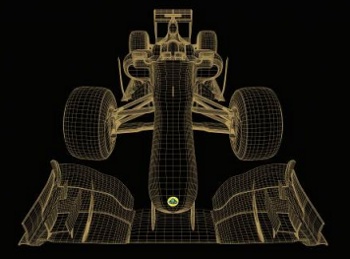
Figure 3: The 2012 Lotus Formula One E20 is shown in a CAD-based wireframe view.
Given this condensed schedule or "pressure environment" as Goddard likes to call it it's obvious why speed and precision are important to more than just the car's on-track performance during the 20-race season. Moving from concepts and models to carbon-fiber composite and alloy is time-critical, too. And the CAE team relies on a large set of engineering tools and processes for the fast, efficient, and, above all, accurate flow of information through every stage of the development cycle.
It's all about the data
New car design for the Lotus F1 Team starts with a concept. During this initial stage, aerodynamic analysis, with traditional model building and wind-tunnel testing, works hand in hand with computational fluid dynamics (CFD) and its wind-tunnel algorithms that allow engineers to test design ideas on their desktops. Between the physical and virtual worlds, concepts are massaged as data is passed back and forth from discipline to discipline and code to code. Computer-aided design (CAD) models, capturing the car and component geometry, provide the interface for these data transactions. Verification of the stresses and loads on structures, assemblies, and components is then conducted via finite element analysis (FEA) software in another iterative looped process. In the last steps, a final model that defines specifications and tolerances is sent out to a network of suppliers and manufacturers, and finished parts come back to be assembled into a race-ready car. On the surface, it's a seemingly simple straightaway of information flow data in, data out, repeated a number of times.
But according to Goddard, data transfer and translation is anything but simple when you dive into F1 details. "With very advanced aerodynamic concepts, we might not get the perfect surfacing quality in the CAD models, so we need to clean them up," says Goddard. "Then, there are multiple CFD tools from both internal and external partners, and backwards and forwards handoffs from aero to CFD that we have to account for. There is also round-tripping between designers and FEA analysts, with the innate mismatches of spline-based CAD and mesh-based stress geometries. And at the end of the supply chain, manufacturers could be working on any of the many available CAD systems."
Clearly, data is not standardized. Real-world Formula One design involves digital inputs and outputs at varying levels of complexity and cleanliness that proceed in a circuitous path, mimicking the tracks that the actual cars navigate.
Steering data through the design development cycle
Back in the early days of CAD-based F1 design the 1990s engineers tried relying on their native CAD systems to do all the data translation work. But, according to Goddard, that came with a lot of uncertainty. "There used to be endless discussions with suppliers about data quality, such as with untrimmed surfaces and rogue code, which you didn't realize were in the model when you saved or exported it," says Goddard. "And you were never quite sure what the supplier was seeing. From a design viewpoint, that gray area was never reassuring."
Realizing that software interoperability was critical in turning design data from gray to black and white, Lotus F1 Team's first efforts at an upgrade involved CAD-conversion tools. But quality, reliability, and efficiency improved considerably with the adoption of CADdoctor, a software suite from Japanese-founded Elysium, about a decade ago. The tool is designed to tie together data from all the various engineering software packages in a seamless, highly automated fashion. It does this by translating code into compatible formats while ensuring that the data being transferred is error-free.
The Lotus F1 Team now uses CADdoctor from one end of the design cycle to the other. At the aerodynamics concept stage, where CATIA V5 is the main design tool, the software is able to send data out to occasional external partners in common industry-standard codes, such as IGES, STEP, or Parasolid. "CADdoctor gives us an absolute guarantee of data quality," says Goddard. Then, in both the aerodynamics and design departments, there can be some very advanced conceptual surfaces. "We use the software for visualization of complex geometries and to refine or clean up the models," Goddard adds.
Once in the design environment, models move back and forth from CAD to FEA. And those handoffs can be complicated by the fact that Lotus F1 Team stress analysts, who have come from varied backgrounds, are allowed to work with their preferred tools, which can include Abaqus, Patran, Nastran, a range of Altair tools, and others. "If we need linear, non-linear, composite, laminate, metallics, we've got a special application for each," says Goddard. "At this stage, the data requirements can be a lot more diverse."
CADdoctor also helps Lotus designers cross-convert between CAD versions, effectively downgrading models where things like filter radii or tangencies of surfaces might not translate properly. In addition, it's used by stress engineers to do things such as simplifying parts to a basic lower-level model so they can more easily load a complex assembly into FEA for meshing and analyses.
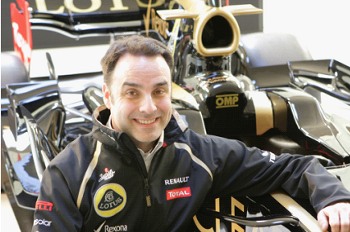
Figure 4: Ian Goddard with the 2012 Lotus F1 Team racecar.
The software is most relied on, though, in supply-chain data management where the team works with the best supplier for each job whether they are a very high-end CAD-based facility or a traditional hand-skilled operation. At every link in the chain, the tool has the ability to convert, clean, and ship data to suppliers in a variety of standardized formats. "That's got two benefits for us," says Goddard. "First, it's a much more efficient way to liaise with suppliers. Secondly, it frees up very expensive high-end CAD licenses. It's using the right tools for the right job."
According to Goddard, the right job for CADdoctor includes a huge range of scenarios. "A couple of weeks ago, we sent virtual cross-sections of the entire wind tunnel with all its hardware, instrumentation, and a full-car model for some outside consulting help," he says. "When you're dealing with data at that scale," he adds, "if we didn't use CADdoctor, our CAD system would quickly grind to a halt."
The software is also extremely flexible. If the Lotus F1 Team needs to get complex data to a supplier immediately because they're in deadline mode, the tool has a streamlined push-button approach. If the team needs to pay greater attention to geometric detail in the end-manufacturing process, they can use the software's interactive and live walk-through features to visualize everything they're processing and sending out. "The Elysium suite's range of tools and universal adaptability come in handy," says Goddard. "We know CADdoctor can deal with anything we throw at it."
Data flow fuels F1 success
Let's not forget for even a fraction of a second that speed matters in Formula One racing. Out on the track, it's easy to remember as the E20 launches from a standstill to 200 km/hr (or 124 mph) in only 4.9 sec, with the engine cycling at 18,000 rpm. But on the drawing board, where designers must meticulously examine the car part by part, ply by ply, and data point by data point, it's less obvious. So while it took 250,000 man-hours to design and build the 2012 vehicle and there were about 20,000 design changes last year, the efficiency, accuracy, and (of course) speed of engineering data flow is critical too. Without it, the Lotus F1 Team would have no chance in its pursuit of the World Championship, a title it won in 2005 and 2006.
"To compete, we need seamless, automated software interoperability and tools like CADdoctor," says Goddard. "So when we're working in that pressure environment, we can just rely on the software to run in the background."
Lotus F1 has partnered with Elysium since 2001 and is now in the process of renewing for another multi-year agreement. At the same time, the two organizations are proactively looking at even more powerful ways to use the software for automation, supply-chain logistics, and additional high-level reverse engineering (see sidebar).
"Partnering with Elysium brings us all sorts of benefits," says Goddard. "We can call on their very best industry experts to help develop those processes and push the limits of F1 performance even further."
How much further is something future race results will show. Stay tuned.
SIDEBAR: Reverse engineering the Lotus F1 chassis using CADdoctor
In a majority of industries, design starts with a blank slate or a blue sky. But in the case of the Lotus F1 Team, it starts with last year's car: more specifically, with the 100-in. by 30-in. cockpit, or chassis, that serves as the driver's safety cell. This component the structural center of the vehicle supports the engine, body panels, wings, and spoilers. At 1,000 plies of molded carbon fiber and aluminum honeycomb, it is the most complex composite laminate in the vehicle. It's form-fitted to the driver but still needs to accommodate an assortment of equipment like steering and pedals, mechanical packaging, electrical components, and a host of other items. So with space and weight at a premium, detailed chassis structural specifications become vitally important.
But certainty about those specifications is complicated by the fact that the composite structures in a Formula One car (and in almost every other composite product) are basically handmade. When the team finishes assembling the jigsaw puzzle of carbon-fiber fabric and tape even using sophisticated software and tools such as laser-ply positioning they are left with variation in thickness and a lot of unknowns. So to fully understand last year's version in order to make improvements in next year's design, Goddard and his team reverse-engineer the chassis.
The reverse-engineering process starts with 3D hand scanning (see Figures 5 and 6). This generates polygon-based point-cloud data, with coarse shapes for the simpler areas and high-resolution polygons for the complex areas where various equipment needs to get squeezed in. The scanned surfaces are then imported into CAD, where the resulting models can be "data heavy." There might also be missing or overlapping areas and even minute "holes" in the data because of things like reflections from the scanner. So the models need a lot of clean-up. "Turning this heap of accurate, but virtually unusable, geometry into true engineering data is almost the holy grail of reverse engineering," says Goddard.
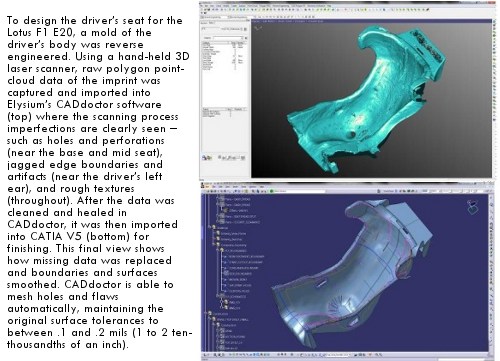
Figure 5: Lotus F1 E20 driver's seat design.
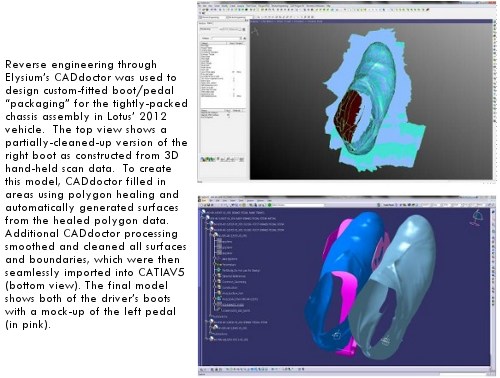
Figure 6: Lotus F1 E20 custom-fitted boot/pedal design.
The alchemy of this data transformation rests on the suite of Elysium tools and CAD support engineer Ashley Paxton from Processia Solutions, a Lotus F1 Team technical partner since 2001 specializing in software integration, customization, development, and product lifecycle management (PLM).
After the chassis is scanned, the data is aligned with the CAD model. But that process can be bumpy. "There can be various types of noise from things like dust, and numerous difference errors such as sliver, short, and long edges," says Paxton. "CADdoctor fixes those things, and it can also find holes and mesh them automatically papering over the cracks, so to speak while keeping the same surface tolerance."
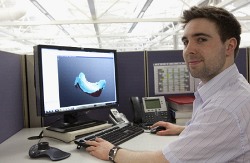
Figure 7: CAD support engineer Ashley Paxton from Processia Solutions at his desk in the design office at the Lotus F1 Team's Enstone Technical Centre. PC display shows Elysium CADdoctor working with a reverse-engineered driver's race seat.
Designers used to split the model into smaller CAD chunks to clean things up. But it still took a long time to eliminate the errors. Now, using Elysium's tools, Paxton can handle much larger quantities of scanned data more efficiently. "It's far easier and quicker to run it through CADdoctor than trying to take care of it in CAD," he says. Paxton also uses the same reverse-engineering process, coupled with stress analysis, on parts manufactured quickly between races to ensure that the components are safe and ready for racing.
Want more information? Click below. CADdoctor by Elysium
Published March 2012
Rate this article
View our terms of use and privacy policy
